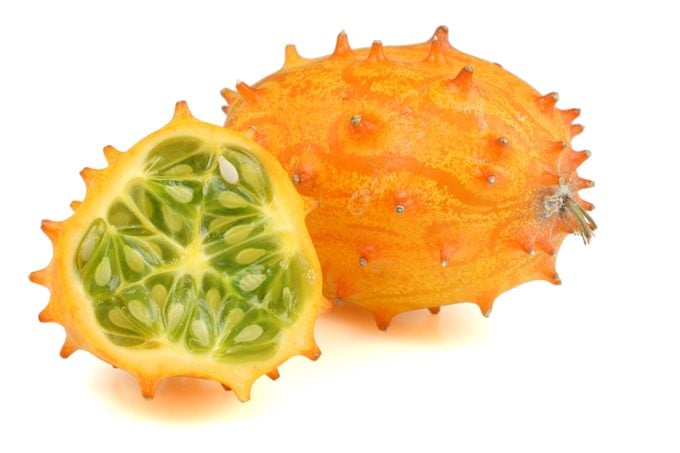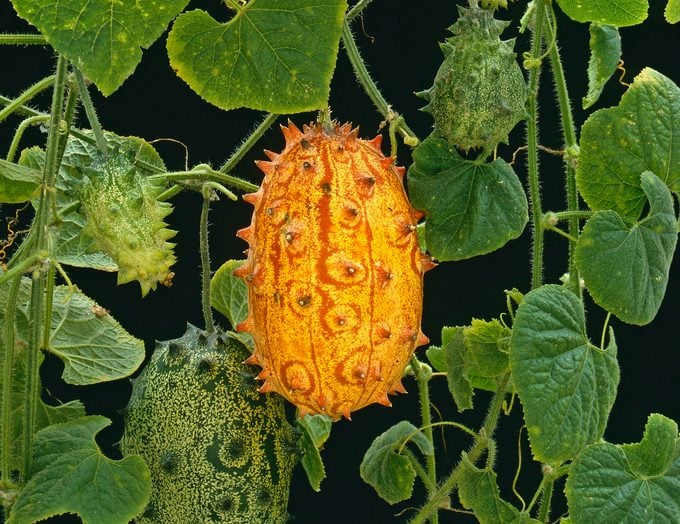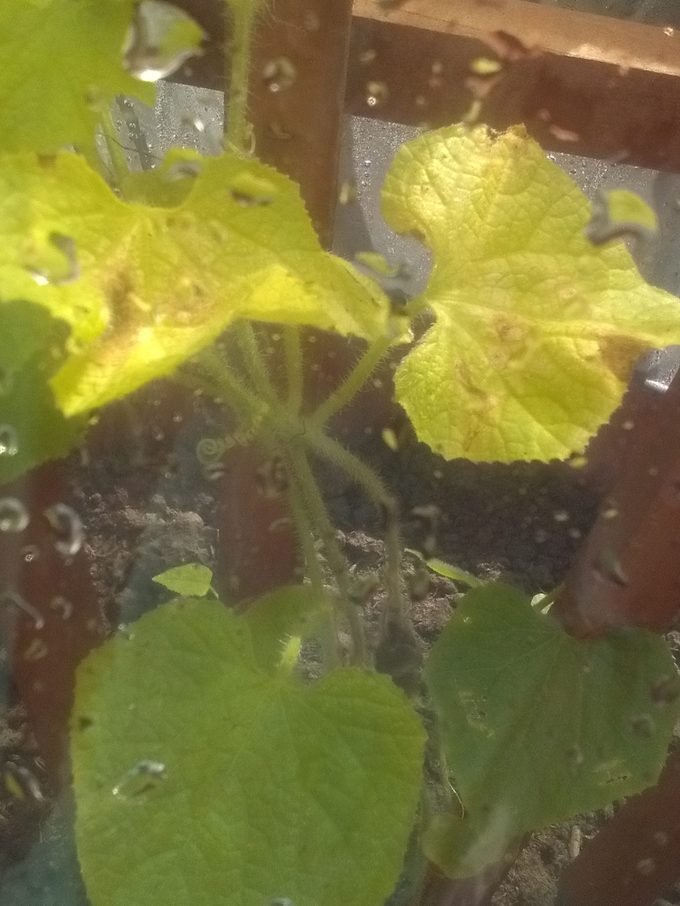What Are Horned Melons and How to Grow Them
Updated: Jun. 17, 2022
Learn everything you need to know about this unusual fruit, including what a horned melon tastes like and how you can grow it at home.
What Are Horned Melons?

Horned melons are related to fruit like musk melons and cucumbers. Plants produce an orange colored fruit that has rough, spiky outer skin. Don’t be intimidated—according to Taste of Home, the fruit inside is sweet, tasting somewhat like a kiwi or a banana but a bit more citrusy. To eat a horned melon, slice the fruit in half, scoop out the fruit and serve.
Check out our favorite summer fruits and vegetables to grow.
Other Names for Horned Melons
This African native goes by quite a few names. The most common other name is jelly melons, but they’re also called African horned cucumber, hedged gourds or Kiwano melons.
Try these 5 tasty ways to deal with zucchini overload.
How to Grow Horned Melons

First, consider your location—they don’t do well in cold temperatures. They’re best grown in zones 9 to 11, but it is possible to grow them anywhere with a growing season longer than 120 days. The seeds can be started indoors to extend your growing season.
Once you’re ready to move the seedlings outside, plant them in a spot with full sun and well-draining, slightly acidic soil. Be sure to provide a trellis or other structure for the plant to climb.
After it flowers, the plant will start growing fruits that look like small green cucumbers. They will slowly ripen into their orange color.
We found the top 10 dwarf fruit trees for small spaces.
Why Do Horned Melon Leaves Turn Brown?

Birds & Blooms reader Brittany Lawrence grew a horned melon in her backyard in Andover, New Jersey. She asked garden expert Melinda Myers, “I carefully water my horned melons once a week and protect them from rain the rest of the time. Why are the leaves starting to brown?”
Melinda: Evaluate the impact of the rain shield on your plants. Horned melons thrive in full sun, good air circulation and moist, well-draining soil. Weekly watering by hand may or may not be sufficient for this plant to thrive. Make sure to thoroughly water a wide area of soil next to and around the plants. Drought, stress or waterlogged soil can cause leaves to yellow and eventually turn brown. Several diseases that also result in brown spots can attack melons, squash, cucumbers and their relatives. The most common diseases include powdery mildew, downy mildew and several leaf spot diseases.
Next, learn how to store vegetables so they stay fresh longer.




















